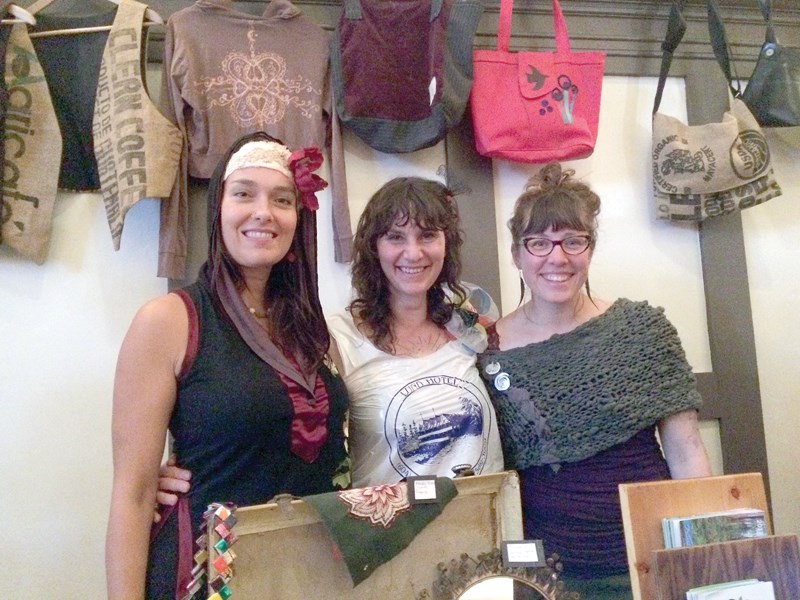Do you have rips in your jeans, stains on your favourite t-shirt or more dated neckties than you know what to do with?
Some would see this as an appropriate time to donate these items to a local thrift store, cut them up to reuse as rags, or even retire them to the landfill. If you suggested this to a fibre artist, you may, however, hear an audible gasp at such a wasteful thought, especially if the textiles in question are made of natural fibres such as wool, cashmere, silk or linen; these are like gold to the creative mind of a textile upcycler.
We are all familiar with recycling, but what exactly is upcycling? Essentially, it is when something has value added to it when recycled into something new. With a little patience and a ball of thread, old wool suits can be upcycled into a patchwork wool skirt. An out-of-fashion cashmere sweater can be cut and the arms turned into funky leg warmers.
The value of upcycling textiles is being recognized on a large scale these days. Airlines updating their interiors are having leather seats upcycled into handbags that fetch a steep asking price. Car companies are seeing their old-fashioned seatbelts made into wallets and belts. Solid business cases are being made for upcycled goods.
Canadians landfill 15 to 20 pounds of clothing per person each year, so it is great to know there may be a detour route to the landfill through a clothing boutique. And, with fashion reported as being the second-most polluting industry in the world, we can find even more motivation to buy reused textiles already in circulation rather than buying new. Thrift store shopping and clothing swaps are great alternatives as well.
Anyone looking for inspiration to upcycle can visit the current eCouture Fashion Show display at Space Gallery, 4712 Marine Avenue, and find amazing local examples of how old textiles can be infused with new life.
Let’s Talk Trash is Powell River Regional District’s waste-management education program.



